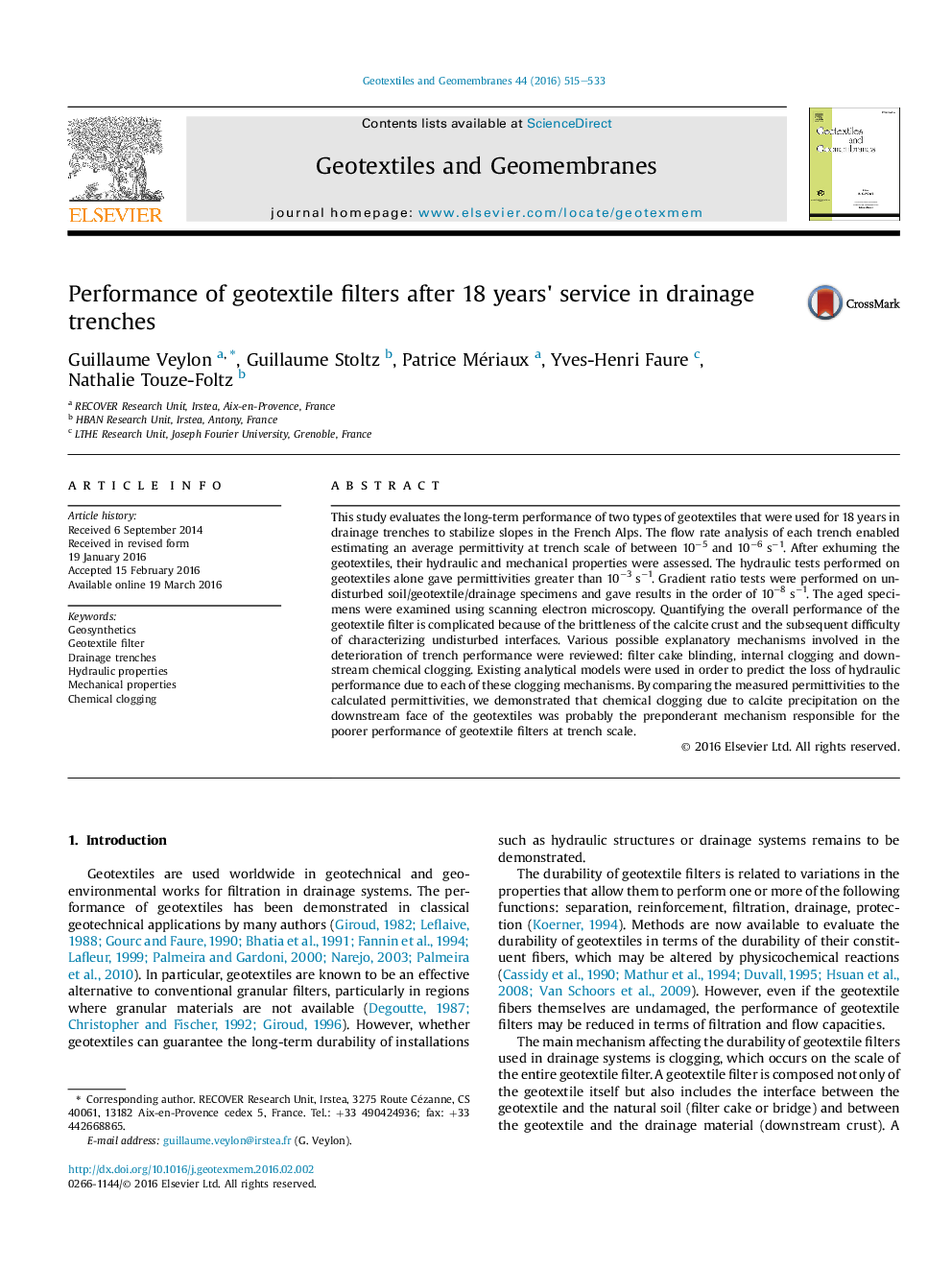| Article ID | Journal | Published Year | Pages | File Type |
|---|---|---|---|---|
| 274022 | Geotextiles and Geomembranes | 2016 | 19 Pages |
This study evaluates the long-term performance of two types of geotextiles that were used for 18 years in drainage trenches to stabilize slopes in the French Alps. The flow rate analysis of each trench enabled estimating an average permittivity at trench scale of between 10−5 and 10−6 s−1. After exhuming the geotextiles, their hydraulic and mechanical properties were assessed. The hydraulic tests performed on geotextiles alone gave permittivities greater than 10−3 s−1. Gradient ratio tests were performed on undisturbed soil/geotextile/drainage specimens and gave results in the order of 10−8 s−1. The aged specimens were examined using scanning electron microscopy. Quantifying the overall performance of the geotextile filter is complicated because of the brittleness of the calcite crust and the subsequent difficulty of characterizing undisturbed interfaces. Various possible explanatory mechanisms involved in the deterioration of trench performance were reviewed: filter cake blinding, internal clogging and downstream chemical clogging. Existing analytical models were used in order to predict the loss of hydraulic performance due to each of these clogging mechanisms. By comparing the measured permittivities to the calculated permittivities, we demonstrated that chemical clogging due to calcite precipitation on the downstream face of the geotextiles was probably the preponderant mechanism responsible for the poorer performance of geotextile filters at trench scale.
